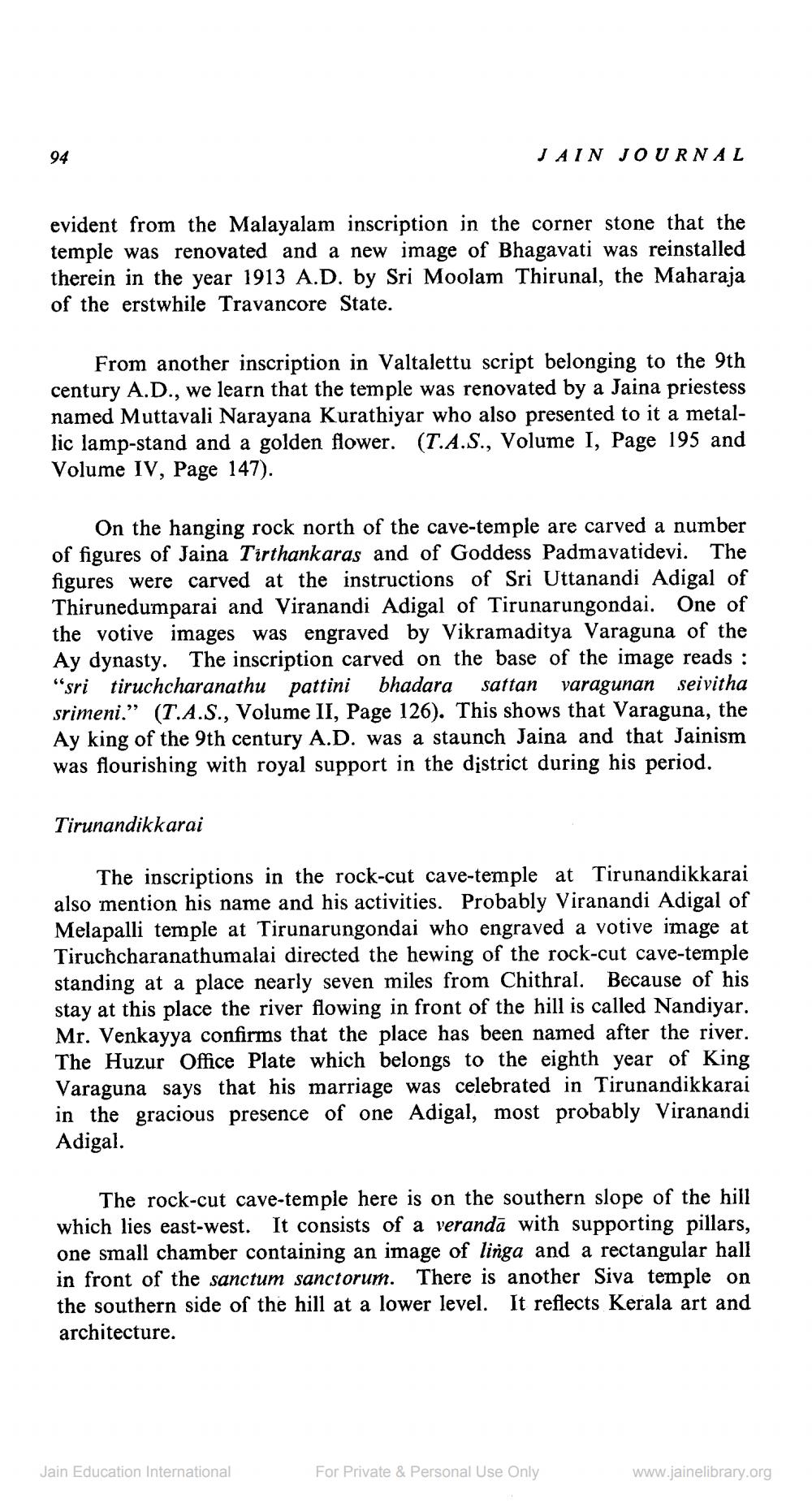________________
94
JAIN JOURNAL
evident from the Malayalam inscription in the corner stone that the temple was renovated and a new image of Bhagavati was reinstalled therein in the year 1913 A.D. by Sri Moolam Thirunal, the Maharaja of the erstwhile Travancore State.
From another inscription in Valtalettu script belonging to the 9th century A.D., we learn that the temple was renovated by a Jaina priestess named Muttavali Narayana Kurathiyar who also presented to it a metallic lamp-stand and a golden flower. (T.A.S., Volume I, Page 195 and Volume IV, Page 147).
On the hanging rock north of the cave-temple are carved a number of figures of Jaina Tirthankaras and of Goddess Padmavatidevi. The figures were carved at the instructions of Sri Uttanandi Adigal of Thirunedumparai and Viranandi Adigal of Tirunarungondai. One of the votive images was engraved by Vikramaditya Varaguna of the Ay dynasty. The inscription carved on the base of the image reads : “sri tiruchcharanathu pattini bhadara sattan varagunan seivitha srimeni.” (T.A.S., Volume II, Page 126). This shows that Varaguna, the Ay king of the 9th century A.D. was a staunch Jaina and that Jainism was flourishing with royal support in the district during his period.
Tirunandikkarai
The inscriptions in the rock-cut cave-temple at Tirunandikkarai also mention his name and his activities. Probably Viranandi Adigal of Melapalli temple at Tirunarungondai who engraved a votive image at Tiruchcharanathumalai directed the hewing of the rock-cut cave-temple standing at a place nearly seven miles from Chithral. Because of his stay at this place the river flowing in front of the hill is called Nandiyar. Mr. Venkayya confirms that the place has been named after the river. The Huzur Office Plate which belongs to the eighth year of King Varaguna says that his marriage was celebrated in Tirunandikkarai in the gracious presence of one Adigal, most probably Viranandi Adigal.
The rock-cut cave-temple here is on the southern slope of the hill which lies east-west. It consists of a verandā with supporting pillars, one small chamber containing an image of linga and a rectangular hall in front of the sanctum sanctorum. There is another Siva temple on the southern side of the hill at a lower level. It reflects Kerala art and architecture.
Jain Education International
For Private & Personal Use Only
www.jainelibrary.org




